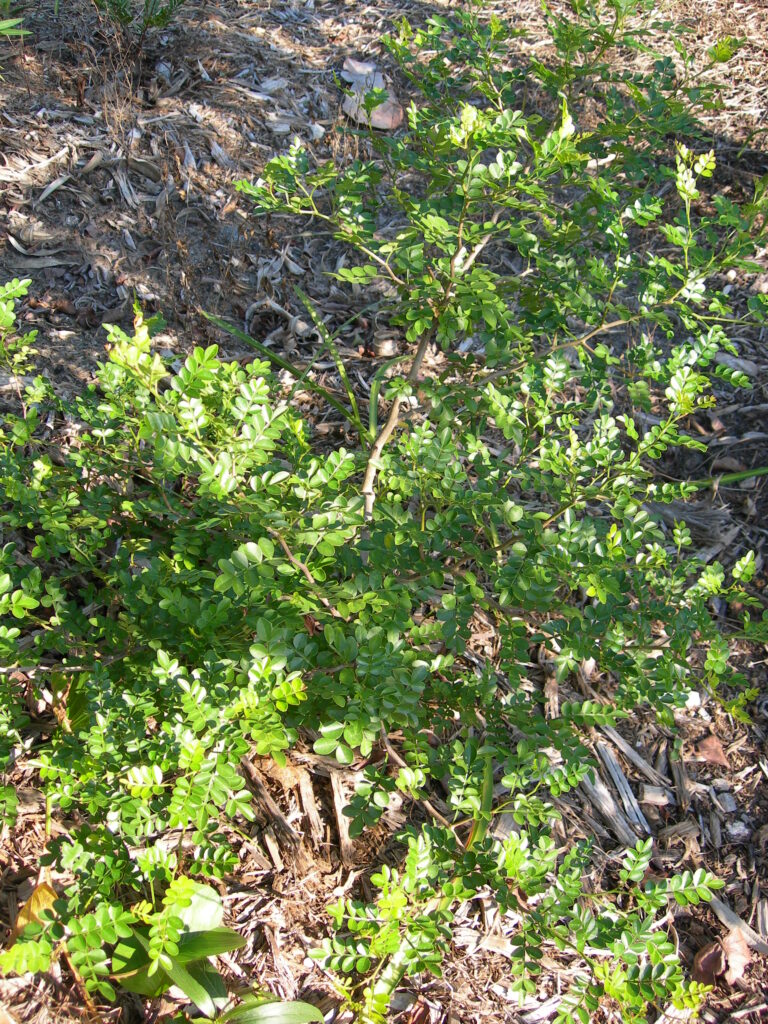Q: We are replacing our mailbox and surrounding plantings, which have survived but not thrived for years despite proper irrigation and fertilizer applications. I suspect that every dog that is walked by stops to relieve itself on the mailbox and plantings. Are there any dog-proof plants for mailbox landscaping?
Scott
Vero Beach, FL
A: Living with canine companions comes with joys and challenges. The simple fact is that dogs relieve themselves outside, usually on the landscape and lawn. The appearance of dark green and/or brown spots on the turf and the decline and unthriftiness of plants where dogs frequently void results from accumulating nitrogen-rich compounds and soluble salts.

A few strategies can help deal with dog urine accumulation in the lawn and landscape. Choose an out-of-the-way area and train the dog to use it. Such an area may be mulched or covered with stone to avoid discoloration of turf. Water will dilute pet waste and may prevent spotting and plant deterioration. Use a hose or watering can to immediately disperse the litter but don’t overwater the lawn trying to manage the waste; make sure the lawn is adequately irrigated.
Locations along a road or sidewalk where dogs are walked may not be suitable for a designated pet relief area. Since the plants subject to frequent pet visits falter due to the accumulation of nitrogen and salts, some things can be done to help those in decline. Be sure the irrigation coverage in the area is adequate; water from one irrigation head should reach the surrounding heads – 100% coverage to dilute the waste. No plants are known to resist pet waste products specifically, but plants known to be salt and high-pH tolerant will stand some stress from pet visits. Check out salt tolerant and beachside plant lists for ideas, including this previous column.
Plantings around mailboxes are not my favorite things. Some of the purposes of landscaping include disguising or hiding work areas and unpleasant views, encouraging cooler temperatures, slowing erosion, and beautifying a space. Mailboxes are utility boxes, something to be downplayed, in my opinion. Plantings around mailboxes showcase the box instead of the beautiful home behind it. Just like red mulch, mailbox plantings highlight the workings instead of blending the components of the landscape into a harmonious design for the area.
If you must plant around a mailbox, consider creating a planting with a purpose other than decorating a box. The bed could be a butterfly, pollinator, cutting, or herb garden. Expand the plantings beyond the “ring around the post.” Design a pleasing bed shape and size. Plan the bed to be larger than a few shrubs planted geometrically; this will also serve a Florida-Friendly goal of reducing turf. Adjust the irrigation, so the bed has its own irrigation zone, and add mulch.
Use your imagination, ditch the circle of small shrubs around the mailbox post, and go bold; feed the pollinators and the mind with beneficial and distinctive plants.
This column first appeared in the Treasure Coast Newspapers.
Leave a Reply